Evolutionary Ecology
The department of Evolutionary Ecology gathers complementary skills in behavioural ecology, population dynamics, population biology, community ecology, and methodology (statistics and modelling). The research done in the department aims at studying how animal species evolve in a changing world by understanding the causes of the evolution of traits, adaptations and interactions. For that, we consider different levels of organization from individuals to populations and communities. Because organisms cannot be considered isolated from other biotic factors, we consider pathogens but also competing species within communities.
We study how individuals adapt to their environments that are largely impacted by anthropic pressures, and how life history traits and behaviour evolve in response to these pressures. Although we mainly focus on phenotype, we more and more consider the mechanistic link between the genotype and the phenotype. We develop the theoretical framework of our discipline through a conceptual and modeling approach. In parallel, we test hypotheses that arise from theoretical predictions through experimental, comparative and observational approaches on different biological models (insects, birds, mammals). Experimental approaches are developed in the laboratory (insect model) and in natura (bird, insect and mammal models). Observational and comparative research is mainly concerned with vertebrates. Our approaches are also, and increasingly, interested in the mechanisms of adaptive responses. In addition to the classical approaches of demographic analysis and trait change, methods of ecophysiology, chemical ecology and molecular biology are used.
Our department hosts several long-term studies of wild populations of different species. These long-term studies offer a valuable way to understand how biotic and abiotic factors affect individuals’ life history traits, and the functioning of populations in natura. Five populations of mammalian species are thus monitored for several years (more than 40 years on roe deer, 30 on Alpine marmots, 25 years on cats, 16 years on zebras, and 20 years on impala). Two of our study sites (La Sassière in Vanoise National Park (Alpine marmots) and Hwange National Park) have been certified as “Site d’Etude en Ecologie Globale” (SEEG), and two (ZA “Hwange” and ZA “Antarctic and sub-Antarctic”) were certified as “Zone Atelier” by the CNRS.
The department of Evolutionary ecology is also largely involved in training activities. Lastly, we also have strong socio-economic relationships. Indeed, because we address questions of major societal interest (global warming, public health) we tightly collaborate with socio-economic partners (Office Français de la Biodiversité, Vanoise National Park, Hwange National Park in Zimbabwe, Office National des Forêts, etc.) and participate to general public and media events.
Publications
Display of 421 to 450 publications on 2449 in total
Population density and plant availability interplay to shape browsing intensity by roe deer in a deciduous forest
Forest Ecology and Management . 515 : 120153
Journal article
see the publicationSex‐related differences in aging rate are associated with sex chromosome system in amphibians
Evolution - International Journal of Organic Evolution . 76 ( 2 ) : 346-356
DOI: 10.1111/evo.14410
Journal article
see the publicationHow to describe and measure phenology? An investigation on the diversity of metrics using phenology of births in large herbivores
Oikos .
DOI: 10.1111/oik.08917
Journal article
see the publicationCancer Susceptibility as a Cost of Reproduction and Contributor to Life History Evolution
Frontiers in Ecology and Evolution . 10 : 861103
Journal article
see the publicationRecent advances in the development of the comet assay on the hemocytes of zebra mussels and its application in field studies for evaluating environmental genotoxicity
International Comet Assay Workshop - 14th annual meeting .
Conference paper
see the publicationTemporal correlations among demographic parameters are ubiquitous but highly variable across species
Ecology Letters . 25 ( 7 ) : 1640-1654
DOI: 10.1111/ele.14026
Journal article
see the publicationSex chromosomes, sex ratios and sex gaps in longevity in plants
Philosophical Transactions of the Royal Society B: Biological Sciences . 377 ( 1850 )
Journal article
see the publicationPredicting characterization factors of chemical substances from a set of molecular descriptors based on machine learning algorithms
Peer Community In Ecotoxicology and Environmental Chemistry . : 100001
Other publication
see the publicationDetecting climate signals in populations across life histories
Global Change Biology . 28 ( 7 ) : 2236-2258
DOI: 10.1111/gcb.16041
Journal article
see the publicationQuantifying fixed individual heterogeneity in demographic parameters: Performance of correlated random effects for Bernoulli variables
Methods in Ecology and Evolution . 13 ( 1 ) : 91-104
Journal article
see the publicationTaking full advantage of modelling to better assess environmental risk due to xenobiotics
Environmental Science and Pollution Research .
Journal article
see the publicationGenetic and species‐level biodiversity patterns are linked by demography and ecological opportunity
Evolution - International Journal of Organic Evolution . 76
DOI: 10.1111/evo.14407
Journal article
see the publicationUsing Camera Collars to Study Survival of Migratory Caribou Calves
Wildlife Society Bulletin . 45 ( 2 ) : 325-332
DOI: 10.1002/wsb.1193
Journal article
see the publicationIncertitude diagnostique des tests ELISA commercialisés pour le diagnostic sérologique des infections par C. burnetii chez les ruminants domestiques
Agrowebinaire organisé par Agreenium et Acta : Plateforme d'épidémiosurveillance en santé animale et zoonoses .
Conference paper
see the publicationA probabilistic approach based on latent class models to interpret Q fever serological test results at the individual and herd levels in domestic ruminants
Journée scientifique de l'Ecole Doctorale SVSAE .
Conference paper
see the publicationGiardiose des carnivores domestiques. Diagnostic, traitement et prévention
Pratique Veterinaire . ( 190 ) : 34-37
Journal article
see the publicationÉvaluation des alternatives à la gestion médicamenteuse du parasitisme digestif chez les bovins : essai d’un bolus à base de plantes, de minéraux et de vitamines chez des génisses laitières en première saison de pâturage
Rencontres GTV Rhône-Alpes .
Conference paper
see the publicationAvis relatif à « une demande d’évaluation du rôle épidémiologique du renard dans la transmission de la tuberculose bovine »
: 91 p.
Report
see the publicationBiologie et écologie des principales espèces de tiques chez les carnivores domestiques
Le Nouveau Praticien Vétérinaire. Canine-Féline . 18 ( 79 ) : 44-52
Journal article
see the publicationRebound in functional distinctiveness following warming and reduced fishing in the North Sea
Proceedings of the Royal Society B: Biological Sciences . 288 ( 1942 ) : 20201600
Journal article
see the publicationThis is a highway to hell: A theoretical study of wildlife-vehicle collisions by simulation
Ecology Across Borders .
Poster
see the publicationContext‐dependent fitness costs of reproduction despite stable body mass costs in an Arctic herbivore
Journal of Animal Ecology . 91 : 61 - 73
Journal article
see the publicationAuthor Correction: Spatial variance-mass allometry of population density in felids from camera-trapping studies worldwide
Scientific Reports . 11 ( 1 )
Journal article
see the publicationMacroecological Patterns of Fruit Infestation Rates by the Invasive Fly Drosophila suzukii in the Reservoir Host Plant Sambucus nigra
1st International Electronic Conference on Biological Diversity, Ecology and Evolution . : 9469
Conference paper
see the publicationEvolution du foyer de brucellose chez le bouquetin des Alpes dans le massif du Bargy, Haute Savoie, entre 2012 et 2020
Bulletin Epidémiologique . ( 92 ) : 10
Journal article
see the publicationWhen more competitors means less harvested resource
Peer Community In Ecology . : 100088
Other publication
see the publicationPl@ntNet, ten years of automatic plant identification and monitoring
IUCN - Congrès mondial de la nature .
Poster
see the publicationThe dimensionality and structure of species trait spaces
Ecology Letters . 24 ( 9 ) : 1988-2009
DOI: 10.1111/ele.13778
Journal article
see the publicationDrivers of tree community assembly during tropical forest post-fire succession in anthropogenic savannas
Perspectives in Plant Ecology, Evolution and Systematics . 52 : 125630
Journal article
see the publication
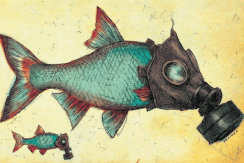
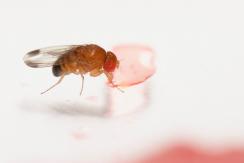
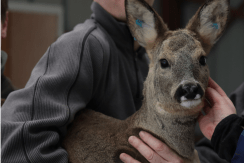
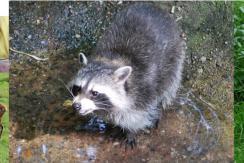
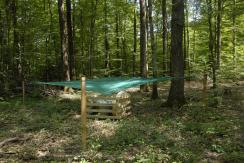
You also, comment on this article